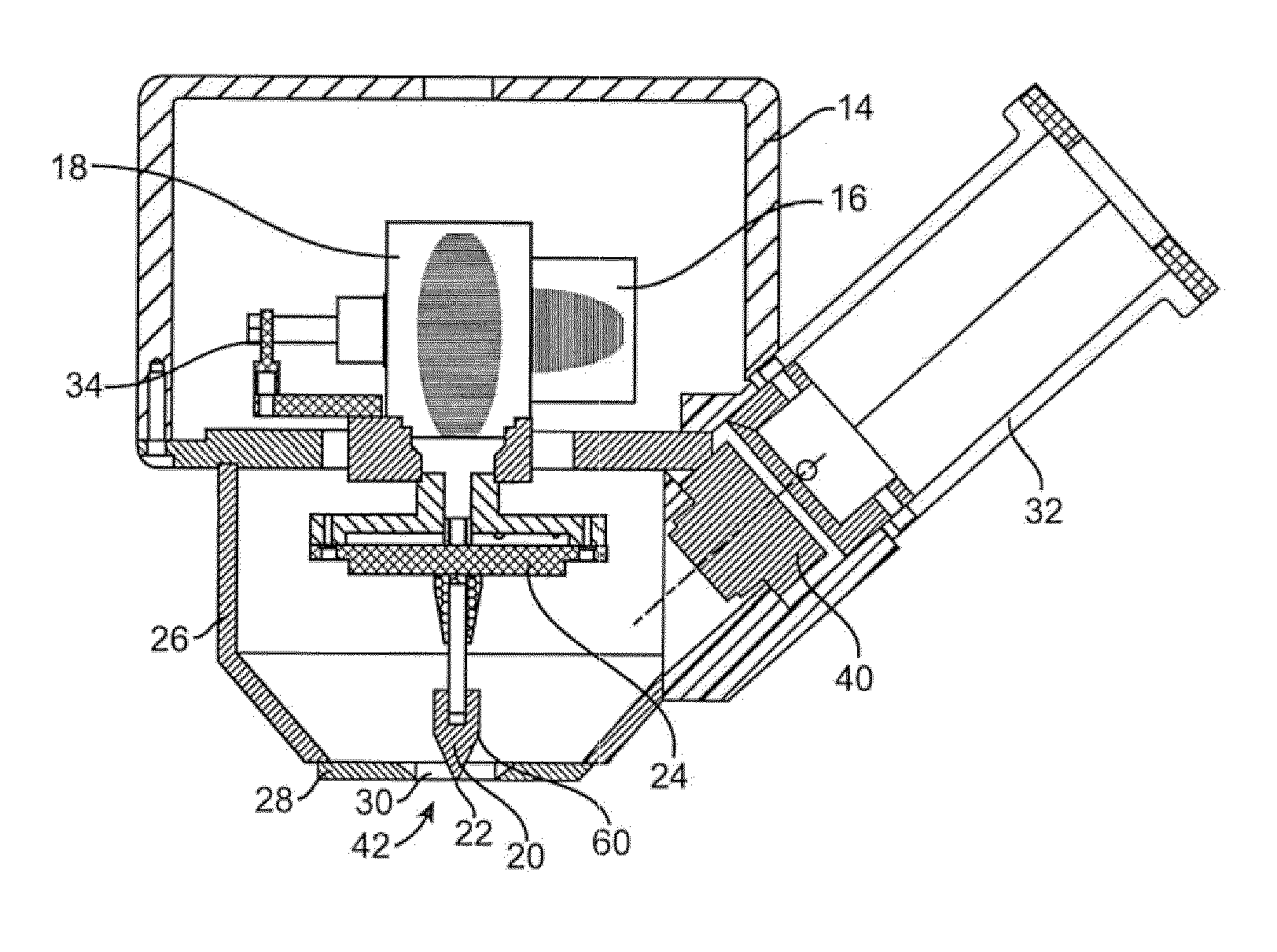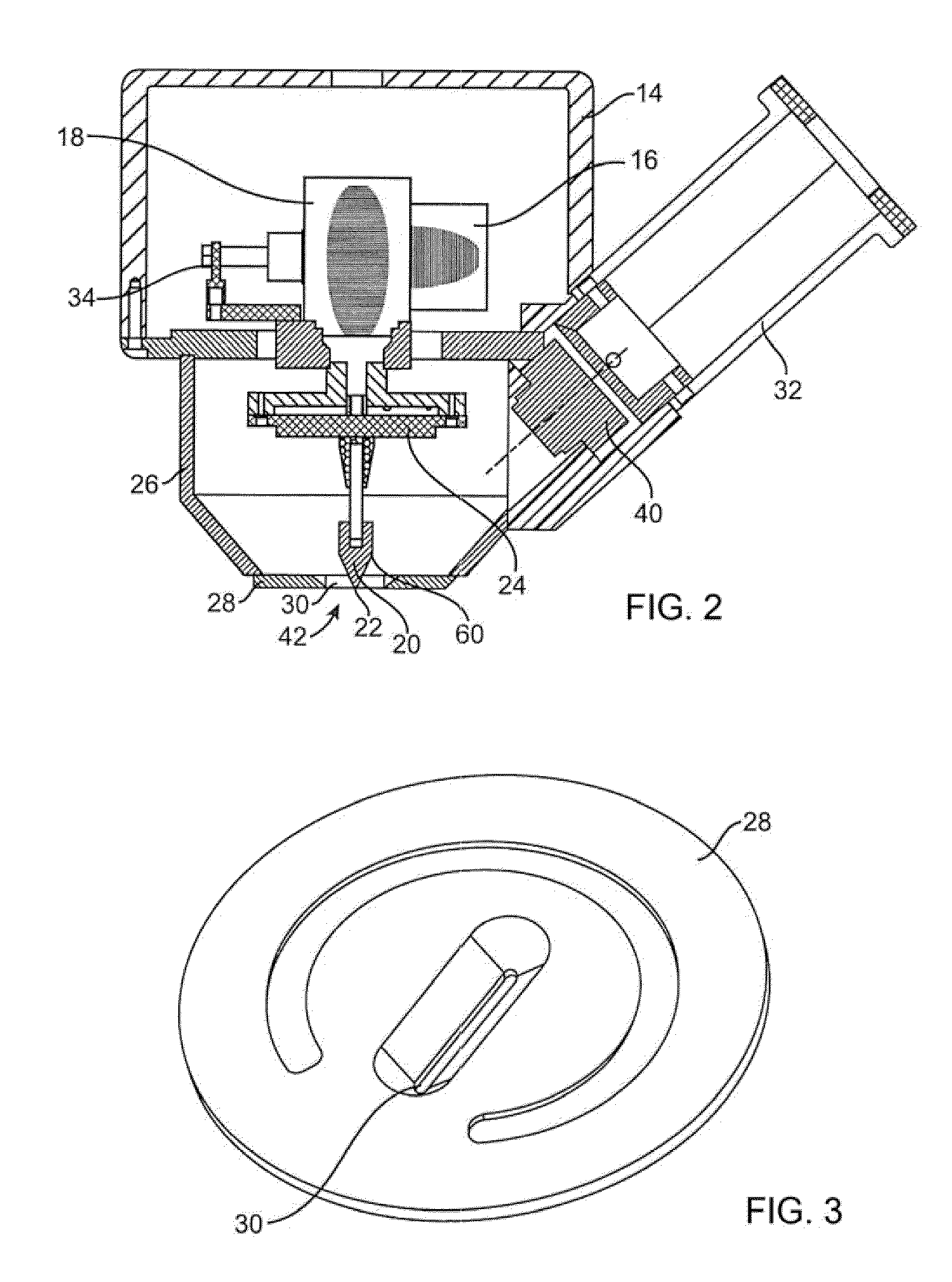Hand-held electric field imager for measuring the surface topography of mammalian skin and other epithelial structures
a technology of epithelial structure and surface topography, which is applied in the field of hand-held electric field imager for measuring the surface topography of skin or other epithelial structures, can solve the problems of unsatisfactory general use, routine use on human subjects, and unsatisfactory use in medical offices or other outpatient settings, and achieve the effect of minimizing the protrusion of the skin
- Summary
- Abstract
- Description
- Claims
- Application Information
AI Technical Summary
Benefits of technology
Problems solved by technology
Method used
Image
Examples
Embodiment Construction
[0026]The present invention provides a device for measuring the surface topographies in epithelial tissue that is hand-held, noninvasive and suitable for use on human subjects, particularly for use in outpatient or other clinical settings. FIG. 1 shows a partially transparent perspective view of the hand-held device 8 according to an embodiment of the invention. As can be seen in the figure, there is a push-button actuator 10 at the top of the device attached to, and extending through, positioning handle 12. Positioning handle 12 is designed to be gripped by one hand of an operator in order to position and orient the device, thus it is preferably a spherical shape, but may be any other suitable shape for gripping. The arrangement of the positioning handle 12 with push-button actuator 10 allows an operator to activate and position the device with a single hand by wrapping a finger or fingers around the positioning handle 12 and engaging the push-button actuator 10 with a single finge...
PUM
 Login to View More
Login to View More Abstract
Description
Claims
Application Information
 Login to View More
Login to View More - R&D
- Intellectual Property
- Life Sciences
- Materials
- Tech Scout
- Unparalleled Data Quality
- Higher Quality Content
- 60% Fewer Hallucinations
Browse by: Latest US Patents, China's latest patents, Technical Efficacy Thesaurus, Application Domain, Technology Topic, Popular Technical Reports.
© 2025 PatSnap. All rights reserved.Legal|Privacy policy|Modern Slavery Act Transparency Statement|Sitemap|About US| Contact US: help@patsnap.com



